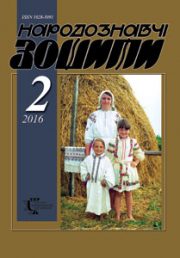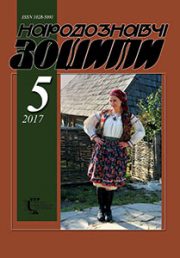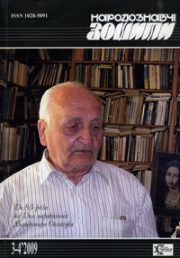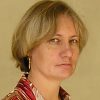The Ethnology Notebooks. 2025. № 3 (183), 509—520
UDK [75.071.1.03.04:929](477)”18/19″(093)
DOI https://doi.org/10.15407/nz2025.03.509
SEMCHYSHYN-HUZNER Olesia
- ORCID ID: https://orcid.org/0000-0001-9677-995X
- Сandidate of Arts (Ph. D), Senior Researcher,
- The Andrey Sheptytsky National Museum in Lviv,
- Department of Ukrainian Art of the 19th—20th centuries,
- 20, Svobody Avenue, 79008, Lviv, Ukraine,
- Contacts: e-mail: olesiasem17@gmail.com
Abstract. Introduction. This publication is dedicated to the anniversary of the birth of Ukrainian artist Modest Sosenko, who worked at the turn of the 19th and 20th centuries. It is based on materials that had previously escaped the attention of art historians researching the artist’s life and work.
Problem Statement. Despite the considerable body of publications from various periods and a thorough monograph, the study of the artist’s oeuvre still requires further clarification and refinement. The aimof this article is to expand the knowledge about Modest Sosenko and outline directions for deeper research.
The object of the study is the figure of the artist himself, significant moments and milestones of his life, and his artistic legacy within the broad context of the historical period.
The subject of the study is the specific features of the artist’s professional formation and development.
Research Methodology. The research is based on methods of systematization, comparison, description, art analysis, generalization, and others.
The territorial and chronological scope includes the places where the artist lived and worked—Eastern and Western Galicia, Germany (Munich), France (Paris), Northern Italy (around the town of Vipiteno), the Dalmatian coast (now Croatia and Montenegro), Wadowice—and covers the years of his life: 1875—1920.
Results. Based on new data and clarified facts, the article provides a clearer understanding of Modest Sosenko’s personal ties with Andrey Sheptytsky and the Metropolitan’s family. The dates of certain monumental and easel works by the artist have been refined, along with their characteristics. Attention is also drawn to previously unknown or little-known easel works by the artist mentioned in various sources.
Keywords: Modest Sosenko, image, iconostasis, mural pain ting, fine art, artistic legacy.
Received 28.05.2025
REFERENCES
- Svientsitsky, I. (1927). Modest Sosenko (1875—1920). Prague: Ukrainian Youth Publishing House [in Ukra inian].
- Radomska, W. (1991). The Return of Modest Sosenko. Fine Arts, 1, 4—7 [in Ukrainian].
- Voloshyn, L. (2004). Modest Sosenko — an artist of Ukrainian modernism (Years of studies: Krakow, Munich, Paris). Notes of the Shevchenko Scientific Society. Proceedings of the Commission on Fine and Applied Arts (Vol. ССXLVIII, pp. 191—210). Lviv [in Ukrainian].
- Voloshyn, L. (2010). Modest Sosenko: the first years of creativity in the Motherland. Сhronicle of the Andrei Sheptytskyi National museum in Lviv, 7 (12), 211—226 [in Ukrainian].
- Rudenko, O. (2011). Manuscript book in the works of M. So senko. The Ethnology Notebooks, 2 (98), 327—331[in Ukrainian].
- Lukan, V. (2016). Metropolitan and artist. Andrey Sheptytskyi and Modest Sosenko. Local historian of Prykarpattya, 26, 17—21. Retrieved from: http://hdl.handle.net/123456789/6375 (16.05.2025) [in Ukrainian].
- Semchyshyn-Нuzner, O. (2011). On the relationship between Modest Sosenko and Metropolitan Andrei Sheptytsky: copying ancient monuments. Сhronicle of the Andrei Sheptytskyi National museum in Lviv, 8 (13), 143—158 [in Ukrainian].
- Semchyshyn-Нuzner, O. (2011). The Heritage of Modest Sosenko in the Field of Modern Sacred Art. Notes of the Shevchenko Scientific Society. Proceedings of the Commission on Fine and Applied Arts (Vol. ССLXI, pp. 302—324). Lviv [in Ukrainian].
- Semchyshyn-Нuzner, O. (2012). Modest Sosenko’s participation in the decoration of the Mykola Lysenko Music Institute in Lviv in 1912—1916. Сhronicle of the Andrei Sheptytskyi National museum in Lviv, 9 (14), 170—181 [in Ukrainian].
- Semchyshyn-Нuzner, O. (2020). Modest Sosenko (1875—1920). Lviv: Andrey Sheptytsky National Museum in Lviv [in Ukrainian].
- Trush, I. (1905). Our Artist Painters. Artistic Bulletin, IX—X, 132—135 [in Ukrainian].
- Sosenko, M. (July 9, 1902). Letter to A. Sheptytsky. Munich. Central State Historical Archive of Ukraine, Lviv. F. 358. Op. 2. Spr. 259 [in German].
- Zastyrets, Y. (1920). Reformer of Ukrainian church painting. Nova Rada (Part 34, p. 3) [in Ukrainian].
- (1920). Modest Sosenko. Posthumous memorial. Nova Rada (Part 28 (104), p. 4)[in Ukrainian].
- Documents about M. Sosenko’s studies at the Academy of Arts in Munich in 1900—1902. (Manuscript). Andrey Sheptytskyi National Museum in Lviv. Department of Manuscripts and old printed books. Rkk-3242 [in German].
- Sosenko, M. (August 7, 1901). Letter to A. Sheptytsky. Munich. Central State Historical Archive of Ukraine, Lviv. F. 358. Op. 2. Spr. 259 [in Ukrainian].
- Sosenko, K. (1920). On the Works of Modest Sosenko. Nova Rada (Part 43 (119), pp. 3—4) [in Ukrainian].
- Pohranychnyi, V. (2003). The iconostasis of the Church of the Holy Trinity in Drohobych — a landmark of Galician sacral art. Sacral art of the Boykivshchyna: Six scientific Draganov readings: collection of articles (Pp. 151—190) [in Ukrainian].
- Chronicle of the Monastery of St. Onuphrius in Lviv. (1902—1917). Central State Historical Archive of Ukraine, Lviv. F. 684. Op. 1. Spr. 2195 [in Ukrainian].
- Vuytsyk, V. (2004). Monastery of St. Onuphrius in Lviv. In: Volodymyr Vuytsyk. Selected Works. To the 70th Anniversary of His Birth. Bulletin of the Institute «Ukrzakhidproektrestavratsiya» (Issue 14, pp. 48—59) [in Ukrainian].
- Matkovsky, I. (2019). Dr. Casimir Count Sheptytsky — Father Clement: Polish aristocrat, Ukrainian hieromonk, Exarch of Russia and Siberia, Archimandrite of the Studites, Righteous Among the Nations, Blessed of the Catholic Church. 1869—1951. Retrieved from: https://ju.org.ua/pict_mod/pictures/226_item_file_sheptitskiy-um.pdf [in Ukrainian].
- O. O. F. (1912). Letter from Vienna. Ruslan (Part 206, pp. 1—2) [in Ukrainian].
- Pachovsky, V. (1912). Performance of a church art at the Eucharistic Congress in Vienna 1912. (Ausstellung fьr kirchliche Kunst). Ruslan (Part 213, pp. 3—4; part 214, pp. 3—4; part 215, pp. 3—4)[in Ukrainian].
- Chivesar, T. (1920). Memories of Wadowice. Nova Rada (Part 26 (102), p. 2; part 27 (103), p. 2; part 28 (104), p. 2; part 29 (105), p. 2). The illness of Mr. Modest Sosenko…. Nova Rada (Part 19 (95), p. 4) [in Ukrainian].







